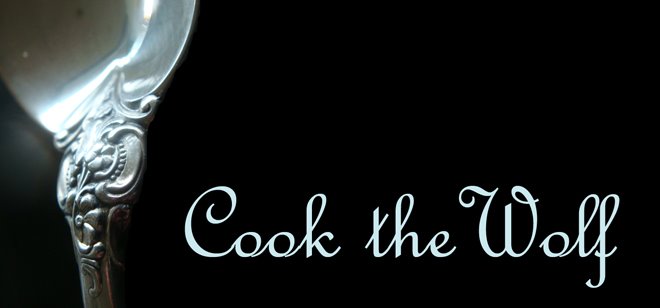And then you forget the answer, and try to make certain beef, chicken, pork etc. dishes--like my disastrous pork tenderloin with olives and oranges--without first searing the meat.
The reason for quickly searing meat before subjecting it to other cooking methods like braising or roasting is not, as many believe, to "seal in the juices," according to page 161 of Harold McGee's brilliant book "On Food and Cooking: The Science and Lore of the Kitchen," but simply to enhance flavor. In fact, brown meat too much, you're just drying it out. The point is to create a tasty and pretty "crust" that will also add depth to flavors of braised dishes and stews.
But do you need to know why, as long as it works? Probably not. Are you a professional chef? Not if you're reading this, and neither am I. Besides: You already have too much information in your head. So if you'd like to be a decent cook without going to culinary school why not just do as you're told by the many chefs and cooks who have come before you and subsequently sold you their cookbooks.
And once you do, remember what you've done/read.
Because culinary history exists for the same reason that regular history (especially that of the Bush Administration) exists: so that we can learn from our extremely stupid mistakes rather than repeating them over and over again and thereby living like Prometheus, whose liver was eaten by that eagle or vulture or whatever kind of bird it was, then grown back each night, to be eaten again the very next day. Over and over and over.
Try to give the lessons of history the slip, and you end up running the country into the ground, or, in our smaller circumstances here, wasting expensive food. Believe it or not, I actually got the hot idea not that long ago (meaning, way after I'd been cooking for decades) that I would not cream the butter and sugar in a cake recipe. What folly. What a loser! Just like Bush.
Anyway, rather than dragging you along as I skip down the lane of my hubristic culinary mistakes, I'm showing you this picture of the aforementioned pork dish.
I'm not going to try to explain in words what I thought I was doing here, except to say that the cooking method and the meat were not a good match. I really like pork tenderloin, and making a terrific meal out of this cheap cut is pretty simple. My next post will be a simple supper, invented by the man who lives here with me, of pork medallions with red curry paste, in fact.
Anyway, I urge you to trot this picture out whenever you need a grotesque reminder of why we sear. Or print it out and put it in your Halloween recipe file, because, as you can see, it looks like a human arm. In this case a human arm dotted with olives and oranges. You want it to look like a browned human arm.
In conclusion, I offer this note on how to sear: add a little olive or canola to a large heavy pot or skillet, turn heat up to medium high; when the oil shimmers, drop in a bit of meat. It should sizzle. If it doesn't, wait a few minutes, but don't let the oil smoke. Place the meat in the skillet, and let it brown until the skillet releases it without sticking, then turn. For smaller pieces of meat, there should be plenty of room between each portion. If you have a lot, cook it in batches with good space between pieces, otherwise the ambient moisture begins a braise before you are finished, which you don't want, until you're ready to braise, if that is what your plan is. You can let it cook a little longer, too, but don't burn it. The idea is to get a nice color on every inch, before you really cook it. I like a deep golden brown. Thank you.


Though I do dare say, Emily, that asking "why the hell do I have to do this?" can also lead to understanding the processes of cooking, rather than recipes. And once you learn those processes, the actions and reactions, you begin to draw them in close like instinct.
ReplyDeleteOne of my best friends used to go at this another way, at a restaurant where we both cooked. Whenever the chef would assign him something, he would always ask, "Ok, how can I screw this up?" The question committed both of them to think through the procedure of making the thing, and made them question each step of the process. He's a great cook now, and I'm still just thankful I don't have to make that stupid plum sauce anymore.
Cheers,
Francis Lam.
Hi, Francis:
ReplyDeleteOf course, you are right! That's basically how it has worked for me. But I do forget things I've learned, and have wasted food experimenting as a result. The more you cook, read, observe, and listen, the better and more instinctive you get, and the more comfortable you feel winging it, and being more creative, of course. But for basic home cooks in hard times, I also think it's good to remember what works. And it is also really good to read the pros in, say, Gourmet mag. Thanks for reading my blog, F.L.
Even worse than the "human arm" are the small dark brown "worms" I once created out of beef tenderloin strips by over-searing, then forgetting to remove them before de-glazing the pan. You might imagine how much worse the meat worms looked when my dear husband covered it ketchup.
ReplyDelete